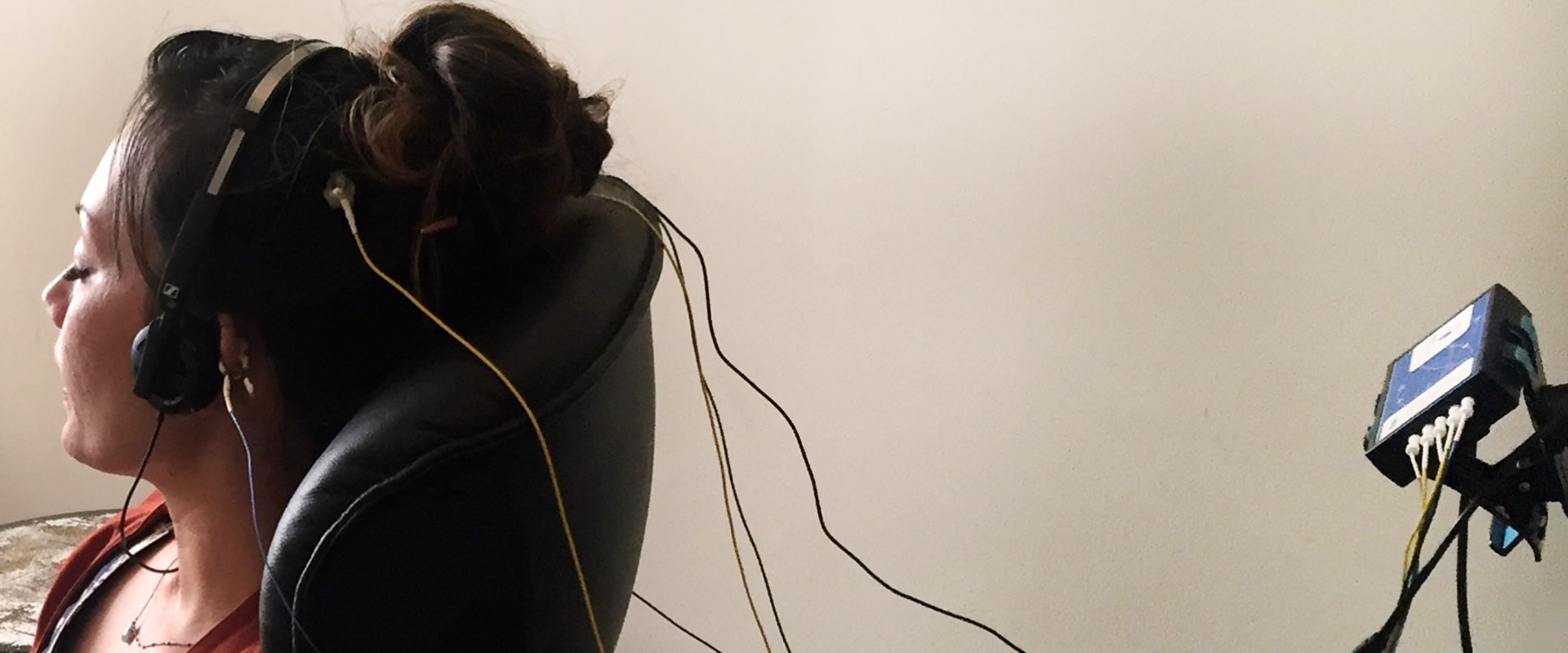Can You Inherit Insomnia? The Intersectionality of Familial Genetics & Inherited Sleep Traits

The young woman sits across from her sleep specialist, frustration etched across her tired face. “My mother couldn’t sleep. My grandmother couldn’t sleep. Now I can’t sleep. Is insomnia something you can inherit?” This question—asked in countless clinical offices worldwide—points to a complex reality that science has only begun to unravel.
Sleep problems often run in families, creating patterns that span generations. However, the mechanisms behind this inheritance involve far more than simple genetics. They weave together DNA, family environments, learned behaviors, and even the echoes of past trauma into a complex tapestry that affects how we experience the most fundamental human needs: restful sleep.
The Genetic Foundations of Sleep
The human genome contains many genes that influence our sleep architecture—the complex pattern of sleep stages we cycle through each night. These genes affect everything from our natural chronotype (night owls or morning larks) to how deeply we sleep and how quickly we metabolize caffeine.
“We’ve identified over 50 gene variants associated with various sleep behaviors and disorders,” explains Dr. Emmanuel Mignot, a geneticist specializing in sleep medicine. “Some markers directly affect circadian rhythm proteins, while others influence neurotransmitter connectivities that regulate sleep-wake transitions.”
Research has established clear genetic links for several sleep traits:
Sleep timing preferences: Studies of twins reveal that approximately 40-50% of the variance in whether someone is naturally a morning or evening person comes from genetic factors.
Sleep duration requirements: The amount of sleep a person naturally needs shows significant heritability, with genetic factors accounting for about 31-55% of individual differences.
Sleep quality measures: The depth of sleep and resistance to environmental disruptions also show genetic influences, with heritability estimates ranging from 33% to 48%.
These genetic influences create the foundation for how we sleep. However, as with most human traits, genes tell only part of the story.
Fatal Familial Insomnia: When Genes Spell Disaster
Perhaps the most dramatic example of genetic sleep inheritance is Fatal Familial Insomnia (FFI)—a rare but devastating prion disease caused by a mutation in the PRNP gene. This condition causes progressive insomnia that worsens until sleep becomes impossible, ultimately leading to death.
“FFI represents an extreme case of genetic sleep inheritance,” notes neurologist Dr. Samantha Winters. “FFI conditions follow an autosomal dominant pattern, meaning if a parent has the mutation, each child has a 50% chance of inheriting it.”
Though rare—affecting only about 40 families worldwide—FFI demonstrates how profoundly genetics can influence sleep. Even in this extreme example, researchers have noted variations in how this devastating condition manifests, suggesting that environmental factors and perhaps epigenetic differences modify the gene expression of even the most deterministic sleep structures.
Beyond Simple Genetics: The Epigenetic Dimension
The field of epigenetics has revolutionized our understanding of DNA inheritance. The environment can influence epigenetic modifications that affect gene expression without altering the underlying DNA sequence and can potentially be passed down through generations.
“Epigenetics helps explain how environmental factors can create inherited sleep patterns without changing the DNA itself,” explains Dr. Mignot, “Factors like chronic stress, trauma, or even persistent exposure to artificial light can create epigenetic changes that affect sleep regulation genes.”
Studies of Holocaust survivors and their descendants provided some of the first evidence for this phenomenon. Researchers found distinctive patterns of stress hormone regulation and anxiety sensitivity that persisted across generations—factors that directly impact sleep quality and insomnia risk.
Animal studies have strengthened this connection. In one notable experiment, researchers exposed mice to traumatic situations and then studied their offspring. The young mice, despite never experiencing trauma themselves, showed increased anxiety, altered stress responses, and disrupted sleep patterns similar to those of their parents.
“These studies suggest that some aspects of our ancestors’ experiences, particularly traumatic ones, maybe biologically embedded and transmitted across generations through epigenetic mechanisms.” “This creates a form of biological memory that can influence sleep regulation in future generations.”
EEG Patterns: The Inherited Electrical Fingerprint
Electroencephalography (EEG) measures the brain’s electrical activity during sleep, revealing fascinating patterns of inheritance. Signatures during various sleep stages show remarkable similarities between close relatives.
“We can often identify family members just by looking at their sleep EEG patterns,” says Susan Othmer, one of neurofeedback’s early pioneers. “The frequency and amplitude of specific brainwaves during sleep states are highly heritable.”
Research shows that several key EEG characteristics run in families:
Sleep spindles: These brief bursts of brain activity during non-REM sleep show a heritability rate of approximately 96%, among the highest of any human biological trait.
Slow-wave activity: The deep, restorative delta waves that characterize our most restful sleep also show strong familial patterns, with estimates of 70-90% heritability.
Alpha intrusions: The inappropriate appearance of alpha waves (typically associated with relaxed wakefulness) during deep sleep—a hallmark of various insomnia types—often appears consistently across generations in affected families.
These inherited EEG patterns create a neurological foundation for how family members experience sleep. When disrupted, they can establish vulnerability to similar insomnia patterns across generations.
Intergenerational Trauma: The Ghosts Controlling Your Sleep
Beyond biology lies the powerful influence of intergenerational trauma—experiences so profound that their effects echo through subsequent generations, often manifesting in sleep disturbances.
“The body keeps the score, and so does the family system. Trauma that remains unprocessed in one generation often emerges as sleep disturbances, anxiety, and hypervigilance in the next.”
This transmission occurs through multiple pathways:
Biological: As mentioned earlier, trauma can create epigenetic changes that affect stress response systems and sleep regulation.
Behavioral: Trauma survivors often develop specific coping mechanisms and parenting styles that transmit sleep-disrupting patterns to their children.
Psychological: Family narratives, unspoken fears, and collective memory create psychological environments that shape how subsequent generations approach vulnerability, including sleep.
One compelling study followed the children of 9/11 survivors whose mothers were pregnant during the attacks. These children showed higher rates of sleep disturbances, including insomnia and nightmares, compared to peers, despite having no conscious memory of the event that affected their mothers.
“What’s particularly interesting is how these intergenerational effects often manifest specifically in sleep,” notes Othmer. “It’s as if sleep—when we’re most vulnerable, and our conscious defenses are down—becomes the stage where inherited trauma plays out most visibly.”
The Contagion of Catastrophizing: Learned Sleep Anxiety
Not all sleep inheritance is biological. Families also transmit cognitive and emotional approaches to sleep, particularly around worry and catastrophizing about sleeplessness.
We often see identical thought patterns about sleeping through generations. A parent who catastrophizes about not sleeping—believing they’ll be completely non-functional the next day if they don’t get enough sleep—often raises children who develop the same thought patterns.
This transmission happens through various mechanisms:
Modeling: Children observe how parents react to sleep difficulties and internalize similar responses.
Direct communication: Parents who frequently discuss their sleep problems or express sleep-related anxiety transmit these concerns to children.
Family sleep rules: Households develop implicit and explicit rules around sleep that shape children’s expectations and anxieties.
A landmark study following three generations of families found that a grandmother’s insomnia and sleep anxiety predicted similar patterns in grandchildren, even when they had limited direct contact. The mother’s sleep attitudes and behaviors were the mediating factor, suggesting that learned psychological approaches to sleep create powerful inheritance patterns independent of genetics.
“This learned catastrophizing creates a vicious cycle,” Dr. Peterson notes. Anxiety about sleep makes sleep more difficult, which confirms the catastrophic beliefs, which increases anxiety, and this entire cycle can be passed down through families.”
Nature vs. Nurture: A False Dichotomy in Sleep Inheritance
When examining inherited insomnia, the traditional nature-versus-nurture debate quickly reveals itself as an oversimplification. Sleep inheritance doesn’t fall neatly into either category but involves complex interactions between both domains.
“The more we study sleep, the more we realize that genetic and environmental factors don’t operate independently—they constantly interact and modify each other,” explains sleep researcher Dr. Sophia Chen.
This interaction manifests in several important ways:
Gene-environment interactions: Genetic vulnerabilities to insomnia only express themselves under specific environmental conditions, such as stress or irregular schedules.
Environmental triggering of genetic predispositions: Some people carry genetic risk factors for insomnia that remain dormant until activated by environmental triggers like trauma or significant life changes.
Genetic influences on environment selection: Our genetic makeup influences which environments we select and create for ourselves, including sleep environments and routines.
Twin studies highlight this complexity. Identical twins raised apart show more similar sleep patterns than fraternal twins raised together, but they still show differences that can only be explained by environmental factors.
“This tells us that while we may inherit vulnerabilities to insomnia, our sleep destiny isn’t predetermined,” Dr. Chen emphasizes. “Both nature and nurture matter and constantly influence each other.”
Breaking the Inheritance Cycle: The Sleep Recovery Approach
Understanding these mechanisms offers hope for those caught in inherited patterns of insomnia. The brain’s neuroplasticity—its ability to form new connections and patterns—means that even longstanding inherited sleep disruptions can be addressed.
“The brain doesn’t distinguish between inherited and acquired disruptions when it comes to recalibration,” explains David Mayen, founder and program director at Sleep Recovery. “Once we identify the specific EEG patterns causing sleep disruption, we can help the brain normalize those patterns, regardless of their origin.”
Sleep Recovery’s approach focuses on this neurological recalibration through several mechanisms:
EEG pattern recognition and feedback: Using advanced brainwave monitoring, they identify the specific disrupted patterns that often run in families.
Targeted brainwave entrainment: The program then provides precise feedback that helps the brain recognize its own disrupted patterns and naturally correct them.
Breaking learned catastrophizing cycles: Simultaneously addressing the psychological inheritance of sleep anxiety and catastrophizing.
The results prove particularly effective for familial insomnia patterns. “We often work with multiple members of the same family,” Mayen notes. “When we help one generation restore healthy sleep patterns, it creates a positive ripple effect that can break inheritance cycles that have persisted for decades.”
One client, Maria, sought help after three generations of women in her family struggled with chronic insomnia. “My grandmother took sleeping pills every night. My mother tried everything from meditation to medication. I was following the same path until I found Sleep Recovery,” she explains. “After completing the program, I’m not just sleeping better, I’m changing how our family relates to sleep. My daughter now has a mother who sleeps normally, something neither I nor my mother ever had.”
Conclusion: Rewriting Your Sleep Inheritance
Can you inherit insomnia? The evidence clearly suggests yes, through multiple biological, psychological, and social pathways. But this inheritance isn’t destiny. Understanding the complex interplay of genes, epigenetics, learned behaviors, and family patterns offers a map for intervention.
The brain’s remarkable plasticity means that even sleep patterns with deep generational roots can be modified. Approaches that address the neurological and psychological dimensions of inherited sleep disruption can help individuals break cycles that have persisted across generations.
This understanding brings hope to those who’ve watched insomnia travel through their family tree. Your sleep inheritance may shape your challenges, but with the right approach, it need not determine your sleep future. The cycle can be broken, offering the possibility that future generations might inherit something different: the gift of natural, restorative sleep.
References:
-
Sleepless Genes: Harvard Press. https://hms.harvard.edu/news/sleepless-genes#:~:text=Insomnia%20affects%20around%2010%20to,risk%20of%20insomnia%20is%20inherited.
-
Twin study suggests genetic factors contribute to insomnia in children, teens. https://aasm.org/twin-study-suggests-genetic-factors-contribute-to-insomnia-in-children-teens/
-
Biological and clinical insights from genetics of insomnia symptoms. https://www.nature.com/articles/s41588-019-0361-7
-
Fatal Familial Insomnia. https://www.ncbi.nlm.nih.gov/books/NBK482208/
-
Clinical profile of fatal familial insomnia: phenotypic variation in 129 polymorphisms and geographical regions. https://jnnp.bmj.com/content/93/3/291


